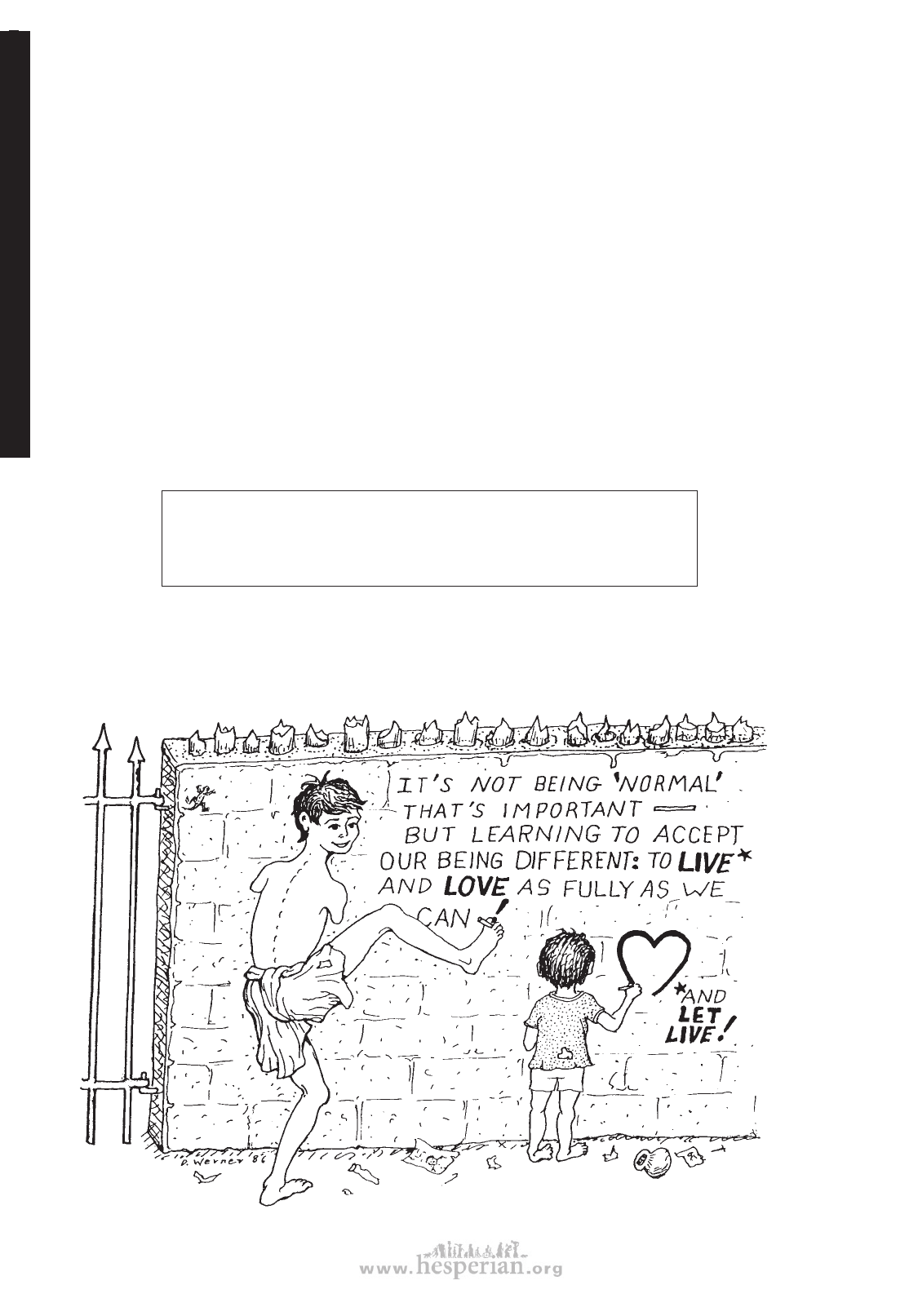
8 chapter 1
The example of Maricela’s ‘therapy’ cannot and should not be copied—but instead, learned
from. In fact, the story suggests that no approach to rehabilitation should be copied
exactly. Our challenge is to understand each child’s needs, and then to look for ways to
adapt her rehabilitation to both the limitations and possibilities within her family and
community. We must always look for ways to make therapy functional and fun.
Recently, some ‘appropriate technology’ groups have tried to adapt standard ‘rehabilitation
aids’ to poor rural communities. However, many of their designs are modeled fairly closely
after the same old city originals, using bamboo and string instead of plastic and aluminum.
Some of these low-cost designs are excellent. But more effort is needed to make use of
the unique possibilities for rehabilitation and therapy that exist in the village, farm, or fishing
camp.
Maricela’s family did just this. The basket of corn, the washing rock, the rocking horse,
and the donkey all became ‘therapy aids’ to help Maricela spread her spastic legs, and at the
same time, to take part in the life of her family and community.
But not every family shells corn in baskets, washes clothes on rocks, or has a donkey. And
not every disabled child has Maricela’s needs and strengths. So we repeat:
We should encourage each family to observe the specific needs
and possibilities of their disabled child, to understand the basic
principles of the therapy needed, and then to look for ways to
adapt the therapy to the child’s and family’s daily life.
Disabled village Children